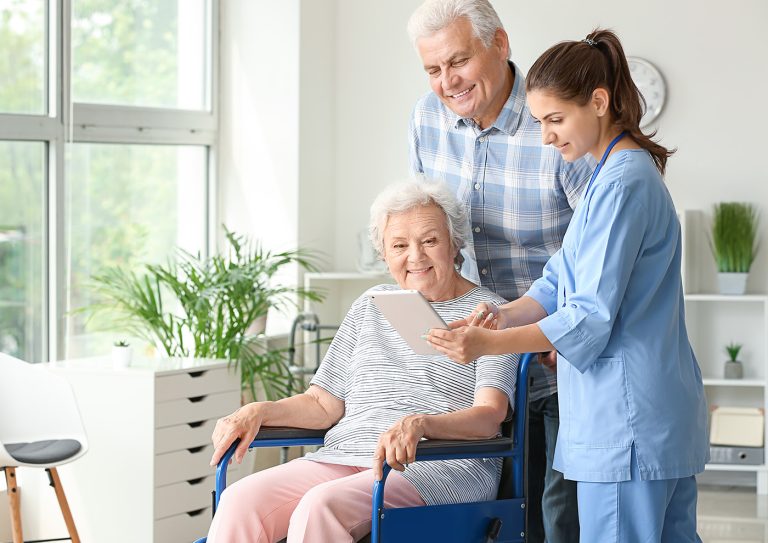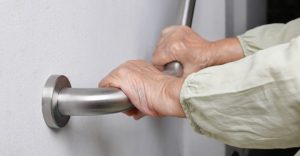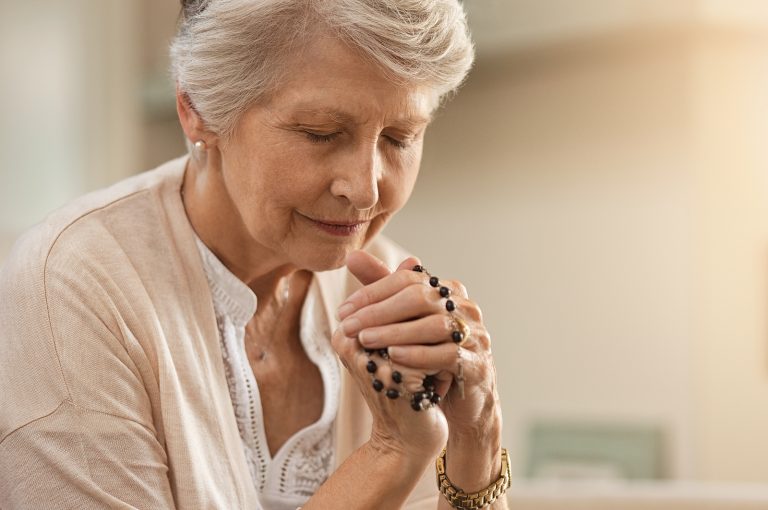
As our loved ones grow older, families must make sure their living environment remains safe, especially when they are transitioning from assisted living to more specialized care such as memory care.
An elderly home safety assessment is one of the most effective tools for evaluating the safety and comfort of an aging adult’s home, providing families with a clear understanding of the risks that might not be obvious and offering customized solutions to improve safety.
What’s the goal of home safety assessments? To help prevent accidents, promote independence, and provide peace of mind to families.
What is an Elderly Home Safety Assessment?
An elderly home safety assessment is a comprehensive evaluation of a senior’s living environment. It is designed to identify potential hazards that could lead to falls, injuries, or accidents. This assessment is valuable when families are considering whether their loved one can continue living in their current environment or if it’s time to move them to assisted living.
The process involves a detailed examination of every part of the home, from living rooms to stairways, and results in actionable recommendations to ensure safety. Fall risk, fire risk, and other hazards are evaluated to come up with a comprehensive plan families can follow. Fall prevention, improving mobility, and creating a more accessible living space can make a big difference in an elderly person’s quality of life.
Step-by-Step Procedure of a Home Safety Assessment
Step 1: Initial Consultation
Before beginning the home evaluation, the assessor will begin with an in-depth conversation with you and your family member. This consultation is essential because it allows the assessor to understand your loved one’s health conditions, mobility issues, cognitive abilities, and daily routines. Knowing these details helps them focus the assessment on their specific needs.
For example, someone with limited mobility may need different recommendations than someone with cognitive impairments. This tailored approach ensures that the assessment isn’t one-size-fits-all but rather a focused evaluation that prioritizes your loved one’s safety.
Step 2: Room-by-Room Evaluation
The heart of the safety assessment is a thorough room-by-room inspection of your home, with each area being evaluated for different types of risks to identify potential safety hazards.
Living Areas: Living rooms, hallways, and common areas are inspected for tripping hazards like loose rugs or cluttered walkways. Assessors will check for adequate lighting, particularly in the areas where older adults may walk during the evening or night. Furniture arrangement is also reviewed—there should be clear, unobstructed paths to prevent falls.
Kitchen: In the kitchen, the focus is on the safety of everyday appliances. Can the elderly person safely reach their cookware, or do they need a step stool? Are there slip-resistant mats near the sink? Appliances are also examined to ensure they are functioning correctly and not posing any fire risks. An assessor will make sure that essential items are easily accessible without requiring risky maneuvers.
Bathroom: The bathroom is one of the most hazardous rooms for seniors, primarily due to the risk of falling. An assessor will focus on non-slip mats, grab bars near the toilet and in the shower, and the general safety of bathing facilities. Your assessor may recommend bathing aides or walk-in showers depending on mobility.
Bedroom: Bedroom safety starts by looking at bed height, ensuring that it’s not difficult for to get in and out of bed. Night lighting is also crucial, as dimly lit rooms can contribute to falls. Lastly, the presence of emergency systems like a phone or alert device near the bed is checked to ensure that help is always within easy reach.
Stairways and Hallways: For homes with staircases, the home safety assessor will pay close attention to the condition of stair treads, handrails, and lighting. Sturdy, easy-to-grip handrails should be present on both sides of the stairs, and the steps should have non-slip surfaces. Hallways are checked for clutter and adequate lighting to prevent older adults from tripping.
Exterior Areas: Outdoor spaces, including walkways, patios, and driveways, are evaluated to ensure they are free of hazards such as cracks or uneven surfaces. Outdoor lighting is also examined, as dim or broken lights can increase the risk of falls, especially in the evening. Additionally, entranceways and doorways are inspected for potential accessibility issues, such as steps that may need ramps.
Step 3: Assessment of Safety Devices
Safety devices are an essential part of keeping an elderly person safe in their home. During the assessment, these devices are checked to ensure they are up-to-date and functioning correctly.
Fire and Carbon Monoxide Detectors: Fire safety is a top concern, and assessors will check that smoke detectors and carbon monoxide detectors are installed in all appropriate areas and are functioning properly. They’ll also ensure batteries are fresh and ensure that your aging loved one can hear the alarms from every part of the home. Additionally, electrical safety such as checking for loose wires and fire hazards will also be assessed.
Emergency Systems: Emergency systems, such as medical alert devices, are evaluated for accessibility and functionality. Having a reliable way to call for help in an emergency is crucial, especially if your loved one lives alone. The home safety assessor will likely recommend easy-to-reach buttons or wearable devices that allow the person to alert emergency services with a single push.
Security Features: Home security systems, including locks, alarms, and cameras, are evaluated to ensure they are working correctly. The goal is to keep your loved one safe from not only internal hazards but also external threats like break-ins.
Step 4: Mobility and Accessibility Modifications
After the home safety evaluation identifies potential hazards, the next step is to evaluate mobility and accessibility concerns that may require home modifications.
Assistive Devices: For seniors with mobility challenges, your assessor may recommend various assistive devices, such as walkers, grab bars, or stairlifts. The goal is to make moving around the house easier and safer, reducing fall risks.
Home Modifications: Some homes require significant changes to improve accessibility, especially for seniors with limited mobility. Home modifications are often checked by occupational and physical therapists who are knowledgeable with the needs of elderly with limited mobility. These modifications might include installing ramps for wheelchair access, widening doorways to accommodate assistive devices, or lowering countertops for easier use. Other suggestions may involve simple changes like rearranging furniture to create more open spaces and reduce fall hazards.
Step 5: Review and Recommendations
After the home safety evaluation, your assessor will compile their findings into a comprehensive report. This report outlines the issues discovered during the inspection and provides detailed recommendations to address them.
Written Report: Summarizes all the findings and highlights areas requiring attention. It will also offer specific, actionable steps to improve safety. The report serves as a roadmap for families to create a safer home environment.
Priority Actions: Immediate concerns, such as tripping hazards or malfunctioning safety devices, are usually listed as priority actions that should be addressed right away. Longer-term modifications, such as home remodeling or installing assistive devices, may be recommended to improve overall safety.
Cost and Resources: Along with recommendations, the report may include estimated costs for any necessary modifications and referrals to contractors or specialists who can complete the work. This helps families understand what’s involved and gives them a starting point for making the necessary changes.
Step 6: Follow-Up
The assessment doesn’t end with the written report. Many home safety assessors offer follow-up services to help families implement the recommended changes.
Implementation Support: Some professionals provide hands-on assistance to ensure that safety recommendations are carried out properly. This can include help with hiring contractors or overseeing modifications to ensure they meet safety standards.
Reassessment: Your elderly loved one’s needs will change over time. So, periodic reassessments may be necessary to ensure that their living environment meets their needs. Regular evaluations can help you and your family stay proactive about safety concerns and make necessary adjustments as your loved one ages.
Learn More about Home Safety Evaluation with Us
Home safety assessments are a crucial step in determining whether your loved one’s home is still the best place for them to live, especially when you’re concerned about their well-being and independence.
By identifying hazards and offering actionable solutions, these assessments provide families with the peace of mind that their loved one is living in a secure environment. If you’re ready to learn more about a home safety evaluation for your loved one, Fellowship LIFE will guide you through the process. Learn more about FellowshipLIFE by reaching out to us today!





